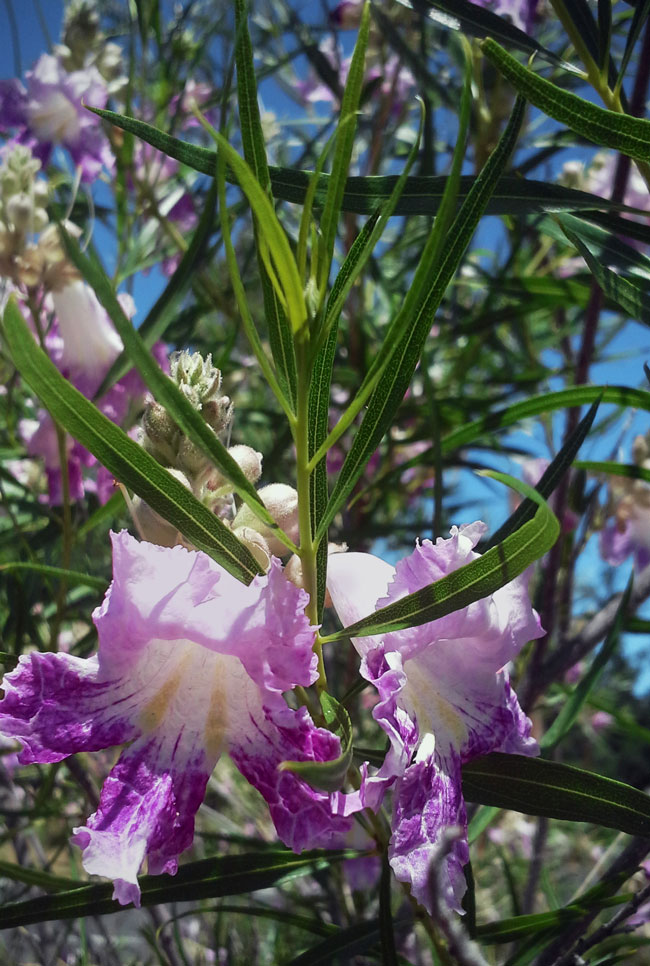 In some of the harshest environments found, living where living seems nearly impossible, the desert willow offers a delicate grace that stands out in sharp contrast to its rugged surroundings. Its fine textured, linear leaves seem too wispy to survive the heat and drought of the desert, a fact that has lead folks to liken them to the foliage of the true willows. This hearty soul, though, has nothing beyond that superficial similarity to compare it to the ubiquitous, water-needy members of the salix, or willow, family. In some of the harshest environments found, living where living seems nearly impossible, the desert willow offers a delicate grace that stands out in sharp contrast to its rugged surroundings. Its fine textured, linear leaves seem too wispy to survive the heat and drought of the desert, a fact that has lead folks to liken them to the foliage of the true willows. This hearty soul, though, has nothing beyond that superficial similarity to compare it to the ubiquitous, water-needy members of the salix, or willow, family.
Occurring in desert washes in California and throughout the Southwest, the Desert Willow forms a large shrub or small tree to 15-20’ in height. Its airy appearance seems to lighten the intensity of heat drenched areas, creating a respite from the relentless sun for weary desert dwellers. The root system of the plant works well as a soil stabilizer, preventing erosion in the desert arroyos prone to sudden, albeit seldom, flooding. Though naturally a large shrub, Desert Willow is stunning shaped as a small, multi-stemmed tree. Its dramatic silhouette when trained this way adds a sophistic flair to any garden, even in winter, when the cold-hardy, deciduous plant is devoid of leaves.
Worthy of growing for its heat tolerance, drought tolerance and unique form and texture alone, the true opus moment of the desert willow comes with its flowers. The ruffled petticoat-like, soft pink to burgundy blossoms appear throughout the summer season. Sweetly scented, they attract many pollinators, including butterflies, bees, and, perhaps most of all, hummingbirds. The delicately beautiful, tubular bi-colored blooms with yellow throats guide hungry critters to the sucrose-rich nectar held within. As with so many desert plants, the tender beauty of the blossoms stands out in sharp contrast to the harshness of the environment they adorn. Perhaps the lesser known common name “Orchid of the Desert” is a better and more descriptive name for this plant than the misleading moniker “Desert Willow”.
Growing Desert Willow is not difficult. It is adaptable to various soils, tolerating sand to clay, alkaline soils, and salinity. Provide good drainage, accomplished in some areas by planting on a slope or even slightly above the surrounding grade, and give a good, deep, drink 1-2 times per month during the dry season for best growth and longest bloom-time. Though drought tolerant, it is fast growing; a rarity among plants native to summer dry regions. Growing tips for this stunning native plant can be summed up easily; grow in the full sun, don’t overwater, and prune to shape as desired. So rewarding and so easy.
|

